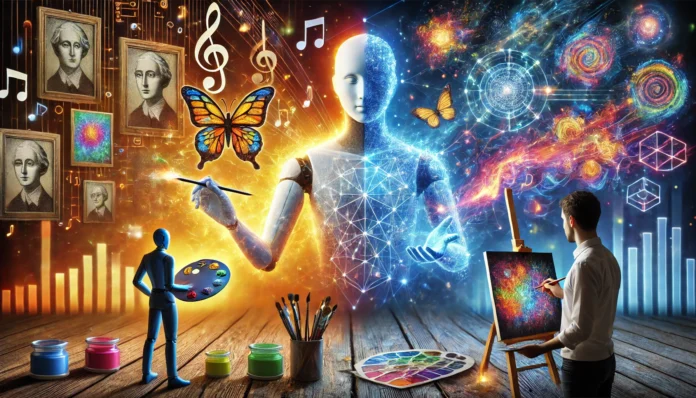Artificial intelligence (AI) has become a cornerstone of innovation, and its impact on creative industries is profound. Tools like ChatGPT for writing and DALL-E for visual art are revolutionizing the way content is created, but their rise is sparking debates about originality, ethics, and the future of human creativity.
The Rise of AI-Generated Content
AI-powered tools are transforming how creative professionals approach their work. Writers, artists, designers, and even filmmakers are leveraging AI to speed up production, brainstorm ideas, and generate content that would take days or weeks to create manually.
Writing
Platforms like ChatGPT and Jasper AI assist writers in drafting articles, composing emails, or even crafting poetry.
- Use Case: Companies use AI to generate blog posts, freeing up human writers for more strategic tasks.
- Criticism: Critics argue that such automation could devalue skilled writing and promote generic, formulaic content.
Art and Design
Visual tools like DALL-E, MidJourney, and DeepArt allow users to create stunning images by inputting textual prompts.
- Example: Artists use DALL-E to conceptualize ideas or create intricate illustrations in seconds.
- Challenge: Questions about intellectual property arise when AI generates images using datasets that include copyrighted works.
Opportunities in the Creative World
AI in content creation is not just about replacement; it also offers unique opportunities to expand human creativity.
- Inspiration: AI acts as a collaborator, providing ideas and possibilities that might not emerge through traditional methods.
- Accessibility: Individuals without formal training in art or writing can produce high-quality content, democratizing creativity.
- Efficiency: AI reduces the time and effort required for repetitive or tedious tasks, enabling creators to focus on complex and innovative projects.
The Threat to Human Creativity
Despite its benefits, the rise of AI-generated content raises concerns about the future of human creativity.
- Loss of Originality: Critics argue that AI-generated works lack the emotional depth, cultural context, and personal perspective that characterize human-made art.
- Job Displacement: Automation in content creation could threaten jobs in industries like journalism, graphic design, and advertising.
- Legal and Ethical Issues: When AI tools are trained on copyrighted material, who owns the resulting content? This question has led to lawsuits and ongoing debates about intellectual property.
Navigating the Ethical and Creative Challenges
To balance AI’s potential with its risks, stakeholders must address several key areas:
- Transparency: AI-generated content should be clearly labeled to distinguish it from human-created works.
- Ethical Training Practices: AI models should be trained using data that respects copyright laws and creator rights.
- Collaboration, Not Replacement: Viewing AI as a tool to augment human creativity rather than replace it can mitigate fears of obsolescence.
Conclusion
AI-generated content stands at the intersection of innovation and controversy. While it has the power to revolutionize industries and democratize creativity, it also poses significant challenges to originality, ethics, and employment.
As AI continues to evolve, its role in creative fields will depend on how society chooses to integrate it. With careful regulation and a focus on collaboration, AI can be a powerful ally, enhancing human creativity rather than undermining it.





